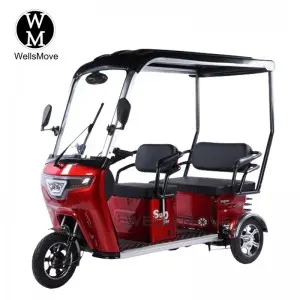Braking distance test: a key factor in the competitiveness of mobility scooters in the elderly market
In today’s mobility scooter market, braking distance testing is gradually becoming a core element to enhance product competitiveness. With the intensification of the global aging trend, the demand for mobility scooters for the elderly is growing, and their safety and reliability have become the focus of consumer attention. Braking distance testing is not only directly related to the safety of users, but also has a profound impact on the market acceptance, brand image and regulatory compliance of products.
1. Braking distance testing and product safety
(I) Ensuring the safety of elderly travel
Most users of mobility scooters for the elderly are elderly people, whose reaction speed is relatively slow, and they may not be able to make correct judgments quickly in emergency situations. Braking distance testing can ensure that the vehicle can stop in time during emergency braking, reducing the risk of accidents caused by untimely braking. For example, some mobility scooters for the elderly that have undergone rigorous braking distance testing can control the braking distance within 4 meters at a speed of 10 kilometers per hour, which provides safer travel for the elderly.
(II) Reducing the risk of accidents
Excessive braking distance is one of the important causes of traffic accidents. Through the braking distance test, problems in the vehicle braking system, such as brake pedal force attenuation and braking response time, can be discovered and improved. These improvements can significantly reduce the braking distance of the vehicle in an emergency, thereby reducing the probability of accidents.
2. Braking distance test and market acceptance
(I) Enhance consumer confidence
When consumers buy elderly scooters, safety is the primary consideration. The braking distance test results can intuitively show consumers the safety performance of the product and enhance consumers’ confidence in the product. When consumers know that a certain elderly scooter has undergone rigorous braking distance tests and performs well, they are more willing to choose the product.
(II) Improve product competitiveness
In a highly competitive market, the braking distance test results can be used as a differentiated selling point for products. Those elderly scooters with short braking distances and good braking performance are more likely to be favored by consumers. For example, a certain brand of elderly scooters performed well in the braking distance test, and its market share also increased accordingly.
3. Braking distance test and brand image
(I) Establish a safe and reliable brand image
Brand is an important asset of an enterprise, and the shaping of the brand image requires the actual performance of the product to support it. Through the braking distance test, companies can show consumers their emphasis on product quality and safety, thereby establishing a safe and reliable brand image. For example, some well-known brands of mobility scooters for the elderly have won the trust and praise of consumers by continuously conducting strict braking distance tests and making the test results public.
(II) Improving brand added value
The improvement of brand image can bring higher added value to products. Consumers are often willing to pay a higher price when purchasing products with a good brand image. Therefore, improving brand image through braking distance testing can not only enhance the market competitiveness of products, but also increase the profit margin of products.
4. Braking distance test and regulatory compliance
(I) Meeting regulatory requirements
With the continuous development of the mobility scooter market for the elderly, governments of various countries have introduced relevant regulations and standards to ensure the safety and reliability of products. Braking distance testing is an important part of these regulations and standards. Companies must ensure that their products meet the requirements of relevant regulations before they can be legally sold on the market.
(II) Avoiding legal risks
If the braking distance of the mobility scooter for the elderly does not meet regulatory requirements, the company may face legal risks. Once an accident occurs, the company may be held legally responsible, resulting in huge economic losses and damage to its brand image. Therefore, conducting braking distance tests is not only a manifestation of the company’s responsibility to consumers, but also an important means for companies to avoid legal risks.
5. Braking distance test and product improvement
(I) Discover potential problems
The braking distance test can discover potential problems in the vehicle’s braking system, such as brake pad wear, insufficient brake fluid, etc. Through the discovery and improvement of these problems, companies can further optimize product design and manufacturing processes and improve the overall performance of products.
(II) Promote technological innovation
The results of braking distance tests can provide important data support for companies and promote technological innovation. For example, companies can develop more efficient braking systems and use more advanced braking materials based on test results to improve the braking performance of vehicles.
6. Braking distance test and market promotion
(I) As a marketing highlight
The results of braking distance tests can be used as an important marketing highlight of the product and highlighted in advertising, product display and other links. By showing consumers the excellent braking performance of the product, companies can attract more potential customers and increase the market awareness of the product.
(II) Enhance the effect of market promotion
In the process of market promotion, the results of braking distance tests can serve as strong evidence to support the advantages and characteristics of the product. Companies can demonstrate the braking performance of their products to consumers and enhance the effectiveness of marketing by holding product demonstrations and publishing test reports.
7. Braking distance test and after-sales service
(I) Providing maintenance basis
The results of the braking distance test can provide an important reference for after-sales service. When consumers report that the braking performance of the vehicle has declined, companies can quickly locate the problem based on the test results and provide corresponding maintenance services.
(II) Improving customer satisfaction
By promptly solving consumers’ braking problems, companies can improve customer satisfaction and enhance customer loyalty to the brand. Improving customer satisfaction can not only promote repeated purchases of products, but also attract more potential customers through word-of-mouth communication.
Post time: Jul-23-2025



